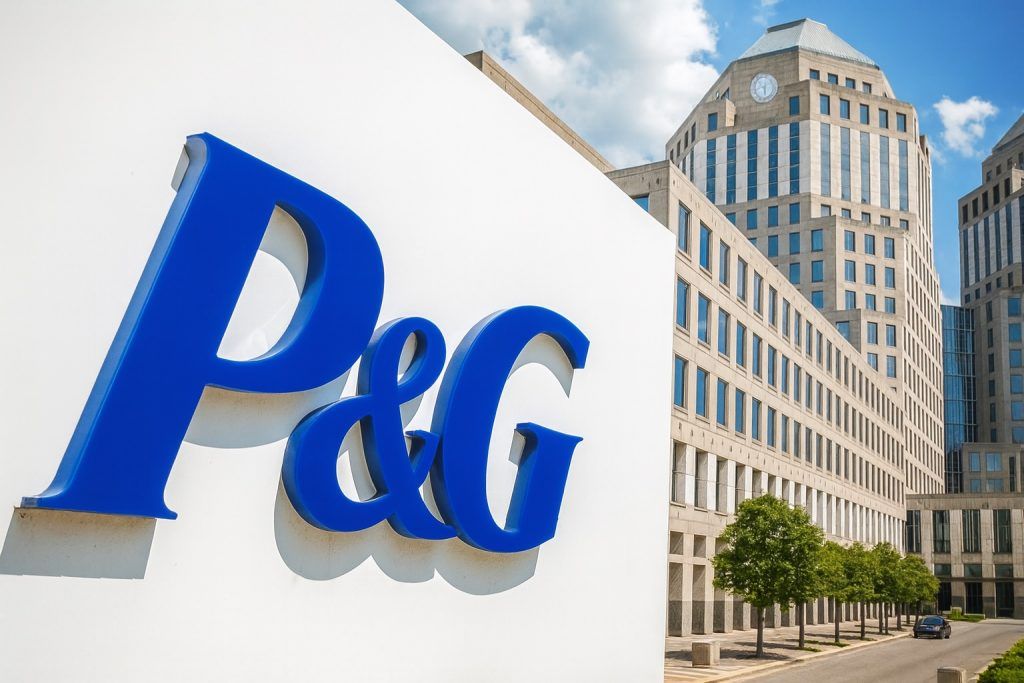- Friday Close – JPMorgan (NYSE: JPM) ended last week’s trading at $311.12 [1], up about 29% YTD, far outpacing the S&P 500’s ~16% gain [2]. The stock remains near its 52-week highs (recent peak ~$318 [3]).
- Q3 Earnings Beat – On Oct. 14, JPMorgan reported a record third-quarter profit of $5.07 EPS (vs. $4.84 expected) [4]. Net revenues were $46.4B (+8.8% YoY) led by trading and deal fees. CFRA Research notes “the quarter showcased the strength of JPMorgan’s diversified business model, with all major segments contributing” and sees this momentum carrying into 2026 [5].
- Interest Income Lift – The bank raised its 2025 net interest income (NII) forecast to ~$95.8B [6], up ~$0.3B, reflecting confidence in its loan portfolio. Zacks’ Brian Mulberry observes, “as a traditional bank, NII is a core earnings engine… raising NII guidance indicates confidence in its interest‑earning asset performance” [7]. (Note: higher interest rates in 2025 drove NII; future Fed rate cuts could moderate this growth.)
- Capital Returns – In July, JPMorgan’s board authorized a new $50 billion share buyback (effective July 1, 2025) and boosted the quarterly dividend to $1.50 per share [8]. These moves signal strong capital generation and shareholder returns, supporting the stock.
- Strategic Initiative – JPMorgan unveiled a $10 billion domestic investment plan (Oct. 13) to finance US “national security” sectors (defense, semiconductors, AI, etc.) [9]. The announcement sent JPM’s shares up ~2% on the day [10], highlighting management’s ambition to tap booming tech and supply-chain themes.
- Analyst Targets – Wall Street is modestly bullish. The consensus 12-month price target is around $327–330 (roughly 5–10% upside) [11] [12]. For example, Morgan Stanley kept an “Equal Weight” rating but raised its target to $338 (+9% vs. current) [13]. Analysts point to JPM’s robust fee revenue, heavy interest income, and buybacks as upside drivers [14] [15]. One TS2.tech analyst notes that algorithmic models see a possible breakout: “a breakout above $309–310 could trigger a run toward the peak” (high-$310s) [16].
- Risk Factors – Despite optimism, caution is widespread. CEO Jamie Dimon has repeatedly warned that stocks look “overheated,” with a correction risk of up to 30% in the next 6–24 months [17] [18]. As one market commentary puts it, “everything is priced for perfection,” so any earnings or policy shock could trigger a sharp pullback [19]. Traders note that US markets remain volatile – gold hit record highs (~$4,100) amid uncertainty – and investors are still watching Fed, tariff and credit cues. [20] [21]
JPMorgan Snapshot: Price, Performance & Returns
JPMorgan’s stock has been one of the market’s top performers in 2025. Over the past 12 months it’s jumped nearly 38% [22], far outpacing the S&P 500 and sector peers. This year alone (Jan–Oct 2025) it’s up ~29.1%, versus ~16% for the S&P [23]. As of Oct. 31 the shares traded around $311.12 [24]. With a market cap ~850 billion [25], JPMorgan remains the largest US bank.
The firm boasts strong fundamentals. It just announced a higher dividend ($1.50 per quarter) and a $50 billion buyback [26] – moves that underpin its shareholder-friendly policies. (For context, JPM’s dividend yield is modest (~1.9% annualized [27], but the buyback adds extra support for the stock.) Analysts note JPMorgan’s earnings have consistently beaten estimates: it has beat Wall Street EPS forecasts in each of the last four quarters [28], building confidence in its guidance.
Recent News and Catalysts
Q3 Earnings (Oct 14). JPMorgan’s third-quarter results were stronger than feared. It posted $5.07 EPS [29] (consensus was $4.84), with net revenue of ~$46.4B (+8.8% YOY) [30]. Trading and investment banking had banner performance: trading revenue hit a record $8.9B (↑25% YoY) [31], and IB fees climbed as M&A and debt underwriting surged. Kenneth Leon of CFRA Research summarized: “the quarter showcased the strength of JPMorgan’s diversified business model… momentum for the rest of 2025 and into 2026” [32]. These beat-and-raise results (CFO Barnum noted a surge in deal pipeline) reinforce analysts’ outlooks for another solid quarter.
Interest Income & Lending. The bank revised up its 2025 net interest income to about $95.8 billion [33]. (In July it had guided $95.5B.) This reflects higher rates and loan growth. Zacks’ Brian Mulberry emphasizes that NII is JPM’s “core earnings engine,” and raising the guidance “indicates confidence in its interest-earning asset performance” [34]. However, traders caution that if the Fed does pivot to cuts later this year, NII growth may slow in 2026 (JPM expects ~95B in 2026, partly offset by lower rates [35]).
Strategic Investments. On Oct. 13, JPMorgan unveiled a $10 billion domestic “security and resiliency” investment initiative [36]. The program – funding defense, energy, AI, clean tech, etc. – is designed to capitalize on U.S. policy trends (such as infrastructure and supply-chain reshoring). CEO Jamie Dimon framed it as a commercial move (“100% commercial,” not political) and it was well-received by investors. Shares jumped ~2% on the news [37], indicating the market’s positive view that JPMorgan is tapping long-term growth themes.
Dividend & Buybacks. The board’s July 2025 announcement of a new $50B repurchase program and a dividend hike was a major capital return announcement [38]. Such actions typically buoy the stock by reducing share count. In practice, buybacks have supported bank stocks broadly this year. For JPM, this means an effective $50B cushion for the coming years, which many analysts see as a tailwind to per-share earnings.
CEO Caution. Despite the good news, Jamie Dimon has sounded warnings that could temper excitement. In interviews (e.g. on the BBC), Dimon said the market looks “overheated” and that a significant correction could be more likely than investors think [39]. He notes that current valuations are sky-high – a theme echoed by others – and that “everything is priced for perfection” [40]. Dimon’s stark “30% crash risk” warning over the next year underscores the asymmetric risk in an already-expensive market [41] [42].
Analyst Views & Forecasts
Wall Street’s consensus view on JPMorgan is cautiously constructive. After the Q3 beat, analysts updated their models. According to TS2.tech, EPS growth of roughly +10% is expected for JPMorgan in Q3, fueled by booming dealmaking and trading activity [43]. Most brokerages have JPM as a “Buy/Outperform”. For instance, Morgan Stanley reaffirmed an “Equal Weight” stance but raised its 12-month price target to $338 (implying ≈+9% upside) [44].
Overall, the average analyst target is around $327–330. As one summary notes, the Street-high target sits near $370 (a 19–20% upside), but the mean is ~$327 [45] [46]. TS2.tech similarly observes that JPMorgan’s consensus target is about ~$327 (roughly +6% from current levels) [47]. These targets reflect confidence in strong fee growth and buybacks, but they also imply only modest near-term gains from today’s price.
Technically, many chartists see JPM on a positive trend: algorithms highlight support near $298 and suggest a break above the recent high (~$318) could spark a rally to new peaks [48] [49]. Volume has picked up on rises, a bullish signal, and a recent pivot-bottom signal (late Oct) aligns with further upside in the near term [50]. Of course, a slip below support lines (around ~$304–308) would trigger caution.
Market & Economic Context
JPMorgan’s stock is moving largely with big-picture forces. Interest Rates: Investors now price in Fed cuts by late 2025 – about a 25bp cut likely this month and multiple cuts thereafter [51] [52]. Lower rates eventually pressure banks’ net interest margins, but in the near term the yield curve staying high is benefiting Q4 income. The Fed is also scheduled to end its quantitative tightening on Dec 1 [53], which may add liquidity to markets.
Economic Growth: US growth remains moderate. JPMorgan and other banks view lending trends as a barometer of consumer health. There’s little sign of widespread distress (asset-quality metrics remain healthy) [54], but analysts warn that any slowdown in loan growth or uptick in delinquencies would be a red flag. As S&P’s Nathan Stovall notes, “banks are a window into the U.S. economy” – so JPM’s next results will be closely read for clues [55] [56].
Market Sentiment: The broader market has been volatile. Early October saw a sharp selloff on trade-war jitters [57], but stocks rebounded once tensions eased [58]. Safe-haven assets like gold hit record highs (breaking $4,100) [59] amid uncertainty, reflecting that some investors remain uneasy. To end the week, JPMorgan’s stock (and bank stocks in general) have held up well, benefiting from both the bank-specific news and the overall upturn in risk appetite.
Risks and What to Watch
Looking ahead, key risks include:
- Policy Shifts: Any hint that the Fed will delay cuts could lift bonds and pressure rates-sensitive banks. Conversely, stronger-than-expected economic data might push long-term yields up, which could reduce trading fee tailwinds.
- Trade/Geopolitics: Renewed trade tensions (the recent US/China tariff saga is one example) could spook markets. Jamie Dimon has explicitly cited tariffs and geopolitical strain as “significant risks” to the outlook [60].
- Earnings & Guidance: With JPMorgan and peers already posting very strong results, the bar is high. Analysts will be watching whether CFO Barnum or Dimon offer upbeat or cautious guidance when JPM reports next (Jan 21, 2026) [61]. Any hint of slowing growth in lending or spending could spark a pullback.
- Credit Quality: Although JPM has high capital buffers, any surprise loan losses (e.g. the $170M carve-out for auto dealer Tricolor this quarter) would unsettle investors [62].
On the flip side, bullish factors include continued robust dealmaking (bank fees hit a record this year [63]), potential M&A spurs, and the sheer size of JPMorgan’s balance sheet. The tech-led bull market and rumored AI boom have lifted many stocks, and JPM is poised to benefit if corporate hiring and spending tick up. If upcoming Fed actions indeed favor easing, banks could get another short-term boost in trading revenues.
In sum, JPMorgan stands at an interesting juncture: many long-term indicators (earnings growth, buybacks, strategic moves) support the stock, yet market valuations and macro uncertainties warrant caution. As one TS2.tech analysis summarizes, JPMorgan is “on investors’ radar for both potential thrilling upside and sharp downside risk” [64].
For Investors: Going into Monday’s open (Nov 3, 2025), JPM’s price sits just below its recent high. If positive catalysts (strong earnings from peers, Fed clarity, or continued rally) prevail, the stock could test $315–320 soon. However, we advise watching support levels around $304–308 – a break below those could signal volatility ahead. In any case, JPMorgan’s fundamentals (diverse revenues, high capital, buybacks) underpin the shares in 2025, but keep an eye on macro signals and Dimon’s warnings as a reminder to manage risk.
Sources: Recent news and data from JPMorgan’s financial reports and press releases [65] [66]; Reuters market and earnings coverage [67] [68] [69]; market analysis and forecasts from TS2.tech, MarketBeat, Barchart, and Investing.com [70] [71] [72]. All quotes and figures are sourced from these publications.
References
1. stockinvest.us, 2. www.barchart.com, 3. www.reuters.com, 4. www.reuters.com, 5. www.reuters.com, 6. www.reuters.com, 7. www.reuters.com, 8. www.jpmorganchase.com, 9. www.reuters.com, 10. www.reuters.com, 11. ts2.tech, 12. www.barchart.com, 13. www.barchart.com, 14. ts2.tech, 15. www.reuters.com, 16. ts2.tech, 17. www.reuters.com, 18. ts2.tech, 19. ts2.tech, 20. ts2.tech, 21. www.reuters.com, 22. www.barchart.com, 23. www.barchart.com, 24. stockinvest.us, 25. www.barchart.com, 26. www.jpmorganchase.com, 27. www.barchart.com, 28. www.barchart.com, 29. www.reuters.com, 30. www.reuters.com, 31. www.reuters.com, 32. www.reuters.com, 33. www.reuters.com, 34. www.reuters.com, 35. www.reuters.com, 36. www.reuters.com, 37. www.reuters.com, 38. www.jpmorganchase.com, 39. www.reuters.com, 40. ts2.tech, 41. www.reuters.com, 42. ts2.tech, 43. ts2.tech, 44. www.barchart.com, 45. www.barchart.com, 46. ts2.tech, 47. ts2.tech, 48. ts2.tech, 49. ts2.tech, 50. stockinvest.us, 51. www.reuters.com, 52. ts2.tech, 53. www.reuters.com, 54. www.reuters.com, 55. ts2.tech, 56. www.reuters.com, 57. www.reuters.com, 58. www.reuters.com, 59. ts2.tech, 60. www.reuters.com, 61. stockinvest.us, 62. www.reuters.com, 63. www.reuters.com, 64. ts2.tech, 65. www.reuters.com, 66. www.jpmorganchase.com, 67. www.reuters.com, 68. www.reuters.com, 69. www.reuters.com, 70. ts2.tech, 71. www.barchart.com, 72. ts2.tech





